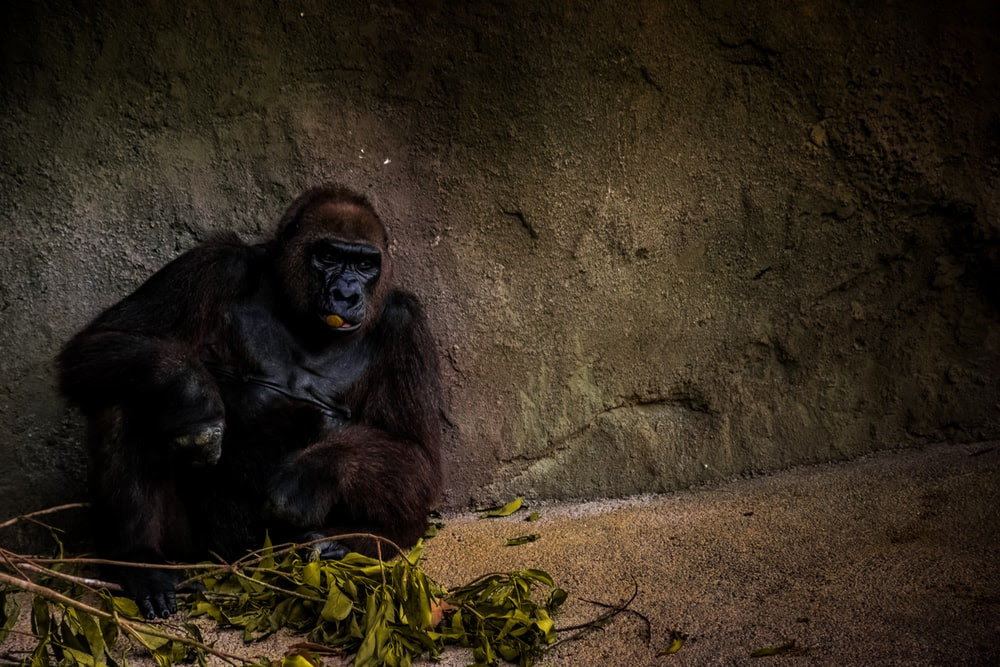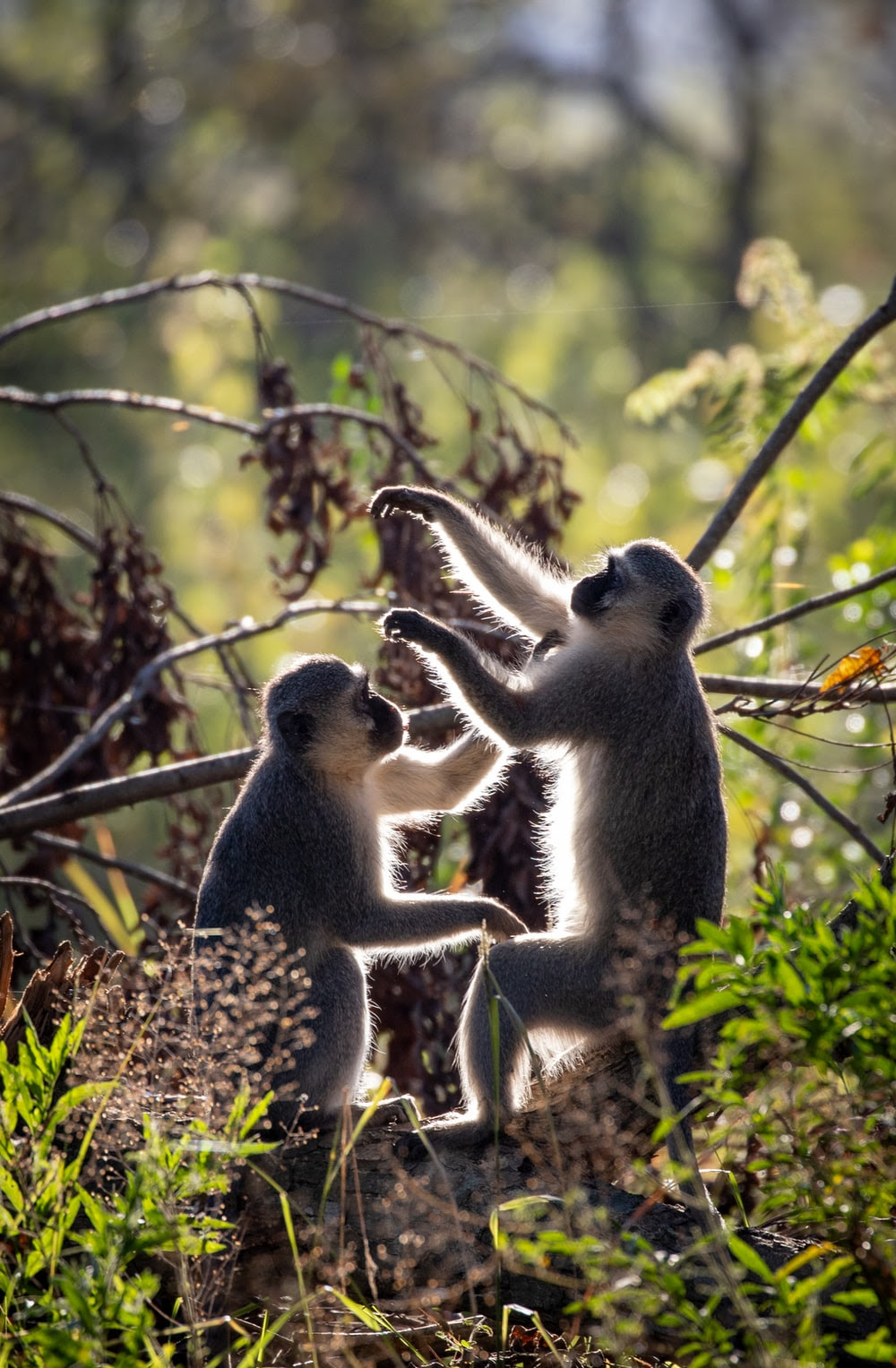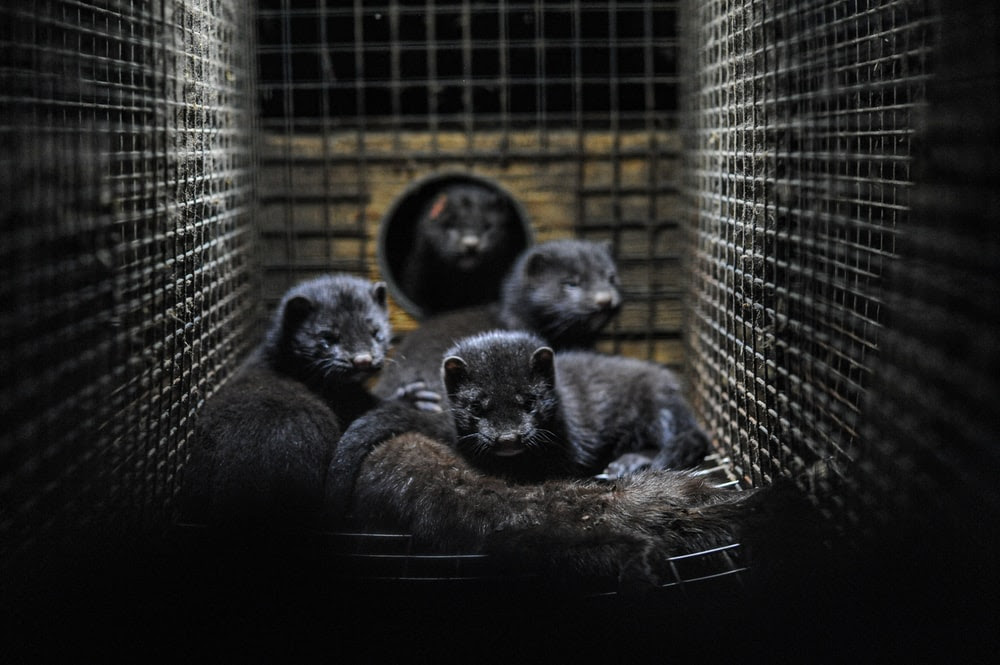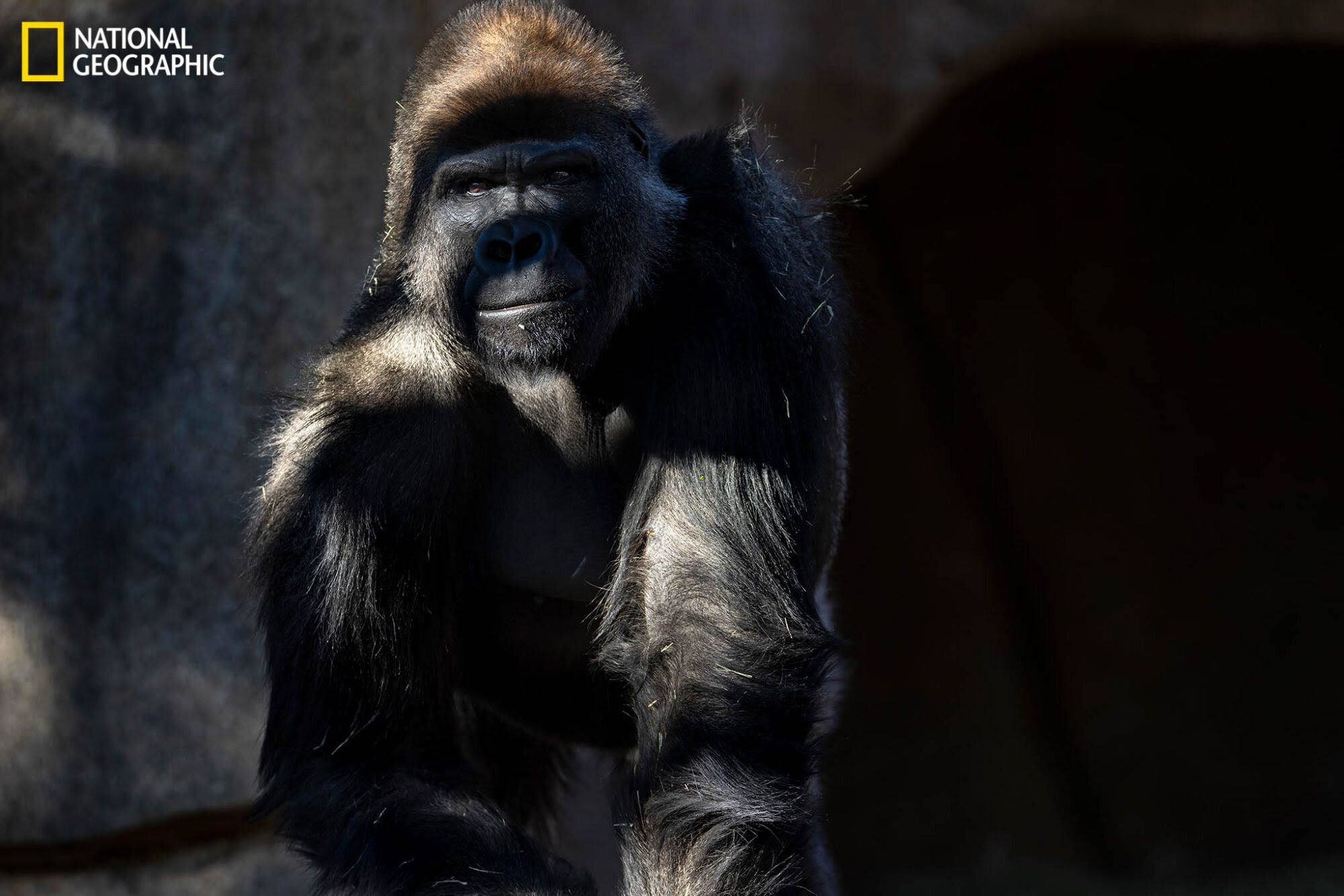An orangutan named Karen, the first in the world to have open-heart surgery in 1994, has made medical history again: She’s among the first great apes to get a COVID-19 vaccine.
In February, Karen, three other orangutans, and five bonobos at the San Diego Zoo have received two doses each of an experimental vaccine for animals developed by a veterinary pharmaceutical company, says Nadine Lamberski, chief conservation and wildlife health officer at the San Diego Zoo Wildlife Alliance.
“This isn’t the norm. In my career, I haven’t had access to an experimental vaccine this early in the process and haven’t had such an overwhelming desire to want to use one,” Lamberski says.

The milestone had been triggered by another: In January, a troop of eight gorillas at the San Diego Zoo Safari Park became the first great apes in the world to test positive for the novel coronavirus. The silverback, 49-year-old Winston, fell ill with heart disease and pneumonia, but following experimental antibody treatment, he is recovering, as are the others.
Globally, infections have also been confirmed in tigers, lions, mink, snow leopards, cougars, a ferret, dogs, and domestic cats, but the fact that great apes are susceptible to the SARS-CoV-2 virus has scientists especially concerned. Fewer than 5,000 gorillas remain in the wild, and, because they live in close family groups, researchers worry that if one caught the virus, the infection might spread quickly and imperil already precarious populations.
More than a year into the pandemic, there’s still little known about how the virus affects animals. In many cases, the veterinary community must rely on limited data sets, learning what it can from individual cases and sporadic outbreaks in a handful of species.
After the first dog tested positive for the virus, in Hong Kong in February 2020, veterinary pharmaceutical company Zoetis began developing a COVID-19 vaccine for dogs and cats. By October it had confidence it was safe and effective in both species. Lamberski was already in touch with Zoetis, following the vaccine’s development, when the safari park’s gorilla troop tested positive in January.
Though the vaccine had only been tested on cats and dogs, she decided it was worth the risk. Between the safari park and the zoo, she and her team care for 14 gorillas, eight bonobos, and four orangutans—all potentially vulnerable and all spending significant time in indoor living quarters where the spread of disease is more likely. In February, while distracted from the needle with treats, nine of the San Diego Zoo’s great apes became the first known non-human primates to receive a COVID-19 vaccine in the U.S.
The apes had no adverse reactions and are doing well, Lamberski says. Blood drawn from Karen the orangutan and one of the bonobos will soon show whether they developed antibodies, the presence of which would indicate that the vaccine may be working. Three leftover doses will soon go to bonobos and one of the zoo’s gorillas who didn’t get the virus. (The troop of eight lives separately, at the safari park.)
Weighing risks

No one knew whether the vaccine would work on apes, and there was no way to be certain that they wouldn’t have an adverse immune reaction. While there’s always some risk with any vaccine in any species, Lamberski says, “it’s not like we randomly grab a vaccine and give it to a novel species. A lot of thought and research goes into it—what’s the risk of doing it and what’s the risk of not doing it. Our motto is, above all, to do no harm.”
It’s common to give a vaccine tested and developed for one species to another, say both Lamberski and Mahesh Kumar, senior vice president of global biologics at Zoetis. That’s because vaccines are made for a specific pathogen, not a specific species. “We commonly use vaccines designed with dogs and cats for lions and tigers,” Lamberski says, and apes at the zoo get human flu and measles vaccines.
What makes a vaccine suitable for a particular species comes down to safety testing. What makes it effective comes down to the adjuvants added. Adjuvants, substances that help the body produce antibodies against a virus, are key to helping the body properly accept the vaccine, and they vary from species to species.
This experimental vaccine, Kumar says, works similarly to the Novavax vaccine for humans, which is currently in late-stage trials. Instead of using a live virus, it uses synthetic spike proteins to trigger the same antibodies as the live virus would.
Zoetis’ data show that the cats and dogs in the trials all had significant immune responses to the vaccine—though it’s still unclear whether it’s enough to successfully prevent infection in the first place. Further studies are needed, Kumar says.
Other U.S. zoos have also requested doses of the vaccine for their great apes, Christina Lood, a spokesperson for Zoetis says, and the company expects to have more available by June. As more apes get the vaccine and more data becomes available, Lamberski says, our understanding of how effective the vaccine is in apes will grow. Her team is sharing what they’ve learned so far with other veterinarians at zoos around the U.S., as well as the veterinary team at Prague Zoo in the Czech Republic, where a gorilla (and two lions) tested positive for COVID-19 earlier this week.
Zoetis is also conducting trials of its vaccine in mink, with plans to apply for commercial authorization once trials are complete. (Some 12,000 have died from COVID-19 on fur farms in the U.S. alone, and are believed to have transmitted the virus to humans in some cases).

Gorillas in recovery
Later in the spring, after waiting the recommended 60 to 90 days after infection, the San Diego Zoo Wildlife Alliance hopes to vaccinate the gorilla troop at the safari park as well. Eventually, Lamberski says, they’ll consider vaccinating their big cats too.
Lamberski says she suspects that the gorillas caught the virus from a worker who had previously tested positive for the virus. The troop all exhibited symptoms, ranging from mild (runny noses and sporadic coughing) to concerning (consistent coughing, reduced appetite, and lethargy).
“Immediately, alarms went off. It was full blown. We’re talking about a troop of eight animals,” she says. Her team reached out to colleagues dealing with human patients to try to figure out what their options might be. “You have to cycle through every scenario, from no intervention and letting it run its course, to what if an animal needed to be intubated and ventilated.”
With Winston, the silverback who developed pneumonia and heart disease, including severe arrhythmia, it’s unclear if the virus exacerbated an underlying condition (heart disease is common in geriatric gorillas), or caused his symptoms. Regardless, Lamberski was worried. “He’s the guy that keeps it all together in the troop,” she says. “The loss of him would be significant.”
After treating him with a monoclonal antibody treatment—which was not taken from the human medical supply chain—he’s been improving, but it’s unclear to what extent the treatment may have helped. “Welcome to zoo veterinary medicine!” Lamberski says. “This is our life. We never really know if we helped an animal or it just got better.”



Comment here